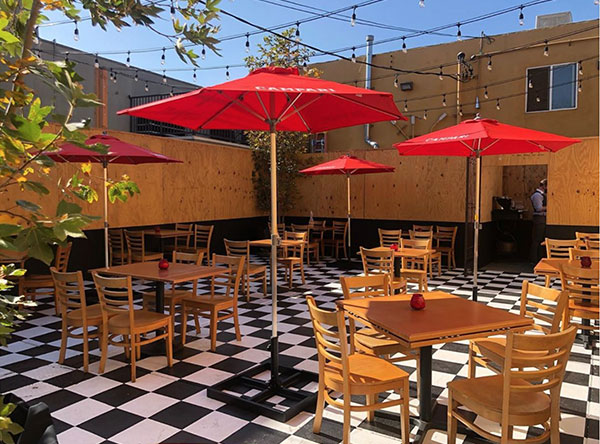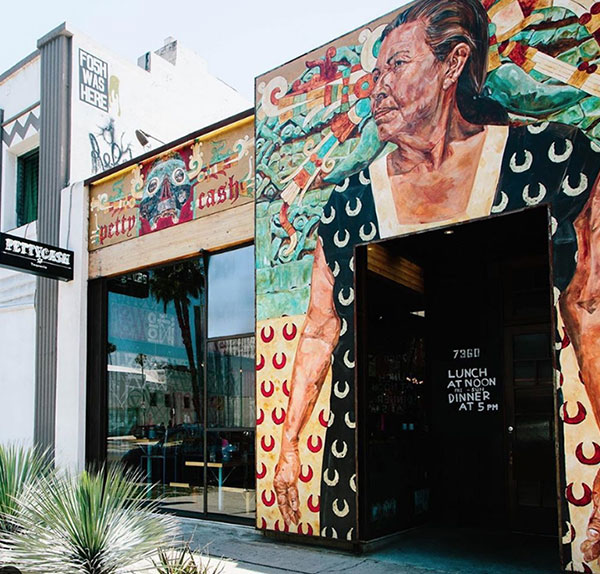Al fresco dining could save Australia’s struggling restaurants
Finding ways to allow businesses in high risk settings (such as indoor shops and restaurants) to operate safely and maintain activity during times of wide scale lockdown, means many businesses could avoid going out of business and ultimately keep a lot more people in the workforce.
For the hospitality industry, this could lead to restaurants and cafes operating from outdoor areas including car parks and footpaths.
These are the suggestions offered by epidemiologists and corporate leaders, as indoor gatherings could prove to be the greatest COVID risk in the months to come.
On Friday, the NSW government announced new restrictions, limiting group bookings in restaurants and all indoor hospitality venues to 10 people.
“Indoor activities are the greatest threat in spreading the disease ... we know [they] act as a catalyst,” NSW premier Gladys Berejiklian said on Friday.
Professor of infectious diseases at the Australian National University, Peter Collignon says, “My view is we’re going to have restrictions for at least two years”.
Professor Collingnon draws attention to recent high transmission rates in other countries, such as Arizona in the US, which has shown that being indoors in areas with air-conditioning had led to greater spread of Covid-19.
Despite this, Australian restaurants would do well to follow the example set it California where a number of L.A. hot spots have created al fresco dining experiences, creating outdoor dining spaces in their parking lots, alleys and sidewalks.

Osteria Mozza and its partner business Pizzeria Mozza combined to create "Piazza Mozza," an outdoor dining space behind the restaurants with a joint pizza and pasta menu.
The area holds 30 guests at a time and was previously used for deliveries and staff parking:
"At first I was like, 'There's no way we're going to make this look nice' because it wasn't particularly attractive, but I think everyone was surprised at how well it turned out," says Mozza’s director of operations Kate Greenberg.
California restaurants Republique and Petty Cash have done a similar thing.

Walter Manzke, the chef and owner of both restaurants turned Republique’s parking lot into a patio dining space that can hold 70 patrons. The space has been painted using the same reds and blues as inside, along with trees, rugs and painted asphalt.
Collignon says cafes, restaurants and bars in Australia should be permitted to seat patrons outside, as the open air makes it more difficult for the virus to travel. He also suggests that staff should wear a perspex face shield which is more effective in preventing droplet spread. Limiting group numbers per table is key, according to Collignon, so when cases are identified, they can be treated like “spot fires”.
Professor of epidemiology at the University of NSW, Mary-louise McLaws agrees.
“Allowing these businesses to be outdoors makes such a difference because of constant air change.
“We’ve got to make it easy for businesses [to operate on the footpaths], and while some councils have embraced it, we need to look at ways of speeding it up so businesses owners aren’t filling out a million forms.”
In Sydney, Sydney Business Chamber executive director, Katherine O’Regan says the biggest obstacle in allowing indoor businesses to operate outside is traffic management and council approval. O’Regan says most food businesses are willing to do what is necessary to operate safely and are already focusing solely on takeaway.
“Certainty is definitely key for any business and providing an element of certainty as to what they need to do to be safe is just as important as providing certainty to customers,” she says.
“These public spaces – laneways, car parks and green spaces – can and should be able to be used by businesses, including retailers, not just to help them stay alive, but also for people to be able to stay connected.”
Irit Jackson, 20th July 2020







